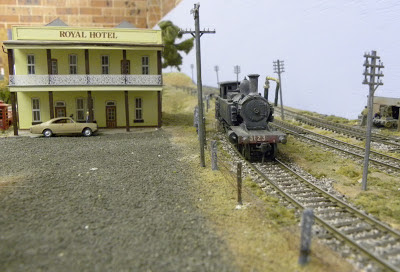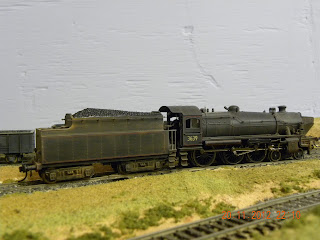 | |||
And what have you done
Another year over
And a new one just begun
Ans so this is Christmas
I hope you have fun
The near and the dear one
The old and the young" (John Lennon)
And what have you done
Another year over
John Lennon's song started to play in my mind last Saturday as I was setting up the Christmas tree for another year. It
started me thinking about what I have achieved from a modelling
perspective over the last 12 months and
whether it has been been fun?The answer to the second question is easy, yes, although occasionally a bit frustrating. The answer to the first questions is a bit more complex.
It has been a year in which some overdue tasks were addressed, the silo, the Mount Windeatt backdrop and fencing details:
http://philipscreek.blogspot.com.au/2012/06/silo-progress.html
http://philipscreek.blogspot.com.au/2012/07/more-silo-progress.html
http://philipscreek.blogspot.com.au/2012/04/backdrop-progress.html
http://philipscreek.blogspot.com.au/2012/11/a-waste-of-time.html
Incidentally, the silo still resides on display in the family room because there is no place for it on the layout as yet and the fencing has not advanced any further than what was described in the post.
It has also been a year of upgrading and learning, particularly additional detail for the EHO and the CCH/LCH fleet:
http://philipscreek.blogspot.com.au/2012/05/paint-stripping-and-other-progress-on.html
http://philipscreek.blogspot.com.au/2012/08/the-eho-hopefully-getting-little-closer.html
http://philipscreek.blogspot.com.au/2012/10/more-on-cch-two-down-14-to-go.html
The next coal wagon (this time a LCH) is now nearing completion and, hopefully, will be in service just after New Year.
The year also saw some opportunity purchases that have added to the roster, the 36 Class ( http://philipscreek.blogspot.com.au/2012/10/power-to-36.html ), the EHO, the start of the CCH/LCH fleet and two new MHGs have been the major acquisitions in 2012 . The latter purchase has allowed me to commence an upgrade program for my original Powerline MHGs.
Commercially, it has also had some frustrations as some long overdue orders have failed to appear. Hopefully, 2013 will see the addition of the Trainorama 48 class and the SDS three dome tanker set.
Finally, it has also been a year of planning, re-planning and more re-planning as I have struggled to decide how best to extend the layout:
http://philipscreek.blogspot.com.au/2012/02/next-phase.html
http://philipscreek.blogspot.com.au/2012/07/which-way.html
Right now I am up to Plan C, that looks more like Plan A than Plan B!
And a new one just begun
So what is planned for 2013, assuming the Mayans have got it wrong.One piece of good news is that another relocation does not appear to be on the horizon for at least 12 months - I've probably jinxed myself now!
As mentioned earlier, I would like to think that the commercial products that I have had on order will finally arrive. Certainly, the CCH/LCH construction program will continue and the MHG upgrades will be completed but beyond that, I'm not sure. No doubt there may be some opportunity purchases but that will depend, in part, on what emerges during the year (ready to run or kits).
As for the layout, I would like to think that I can make a start on the expansion plans. I do know that the growth in the rolling stock roster is starting to put some pressure on the staging areas. They are getting quite crowded.











































